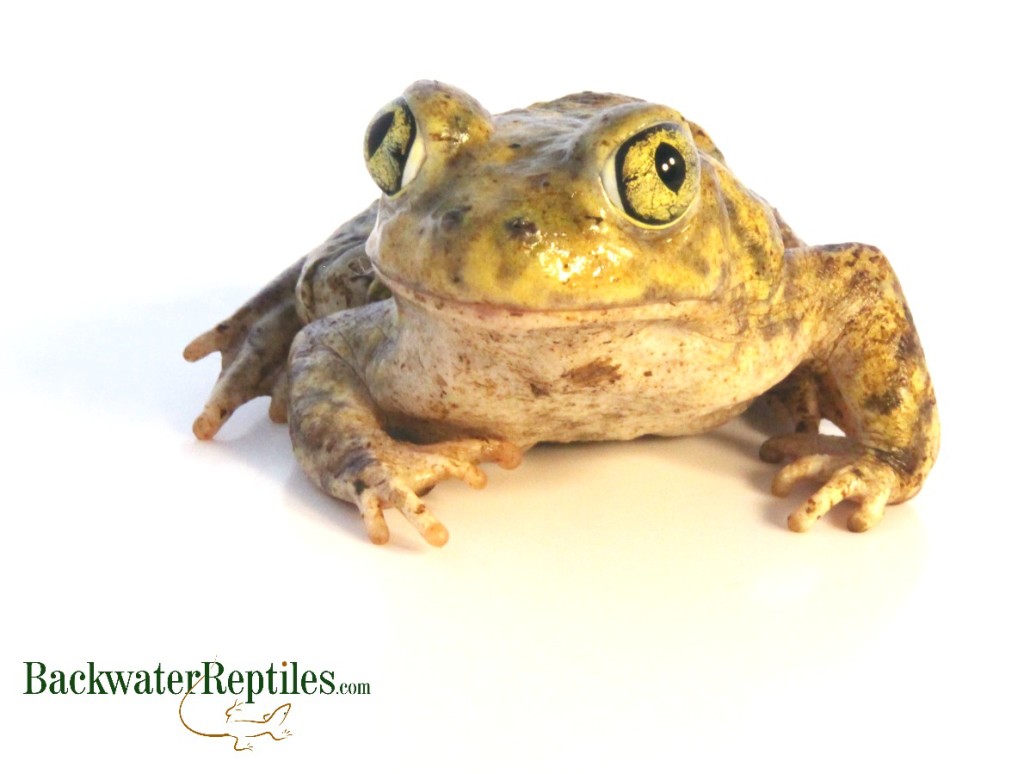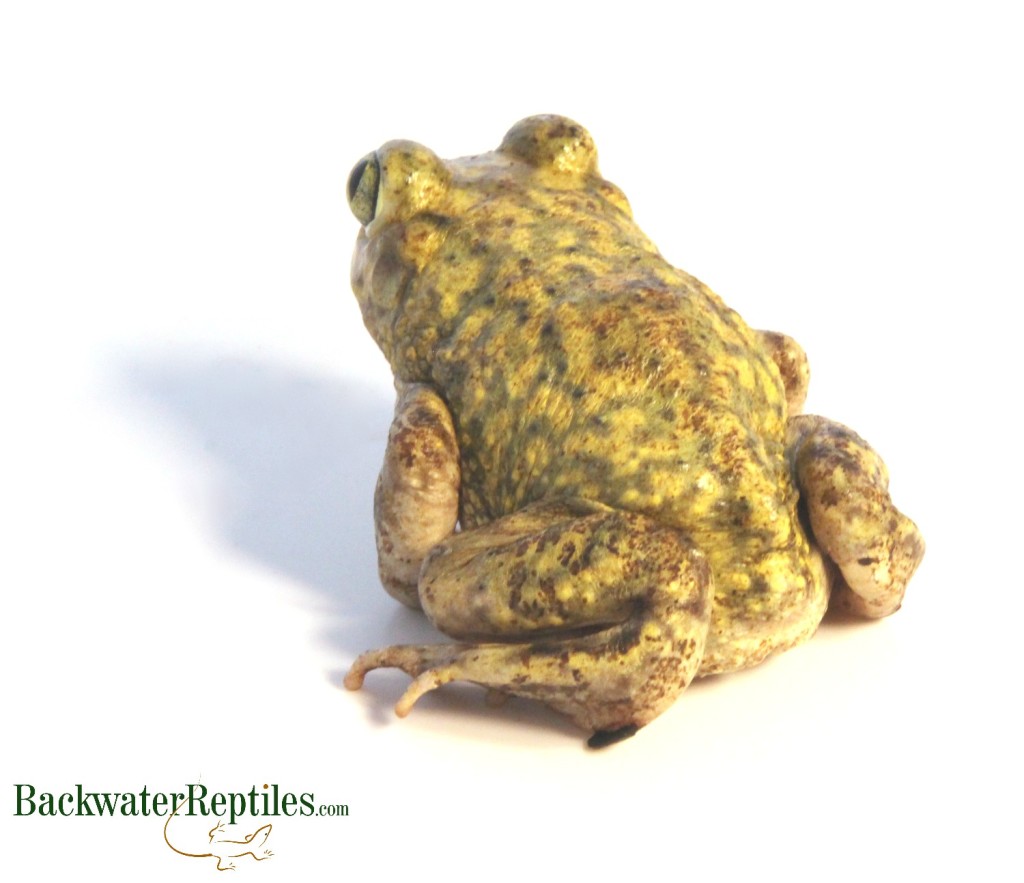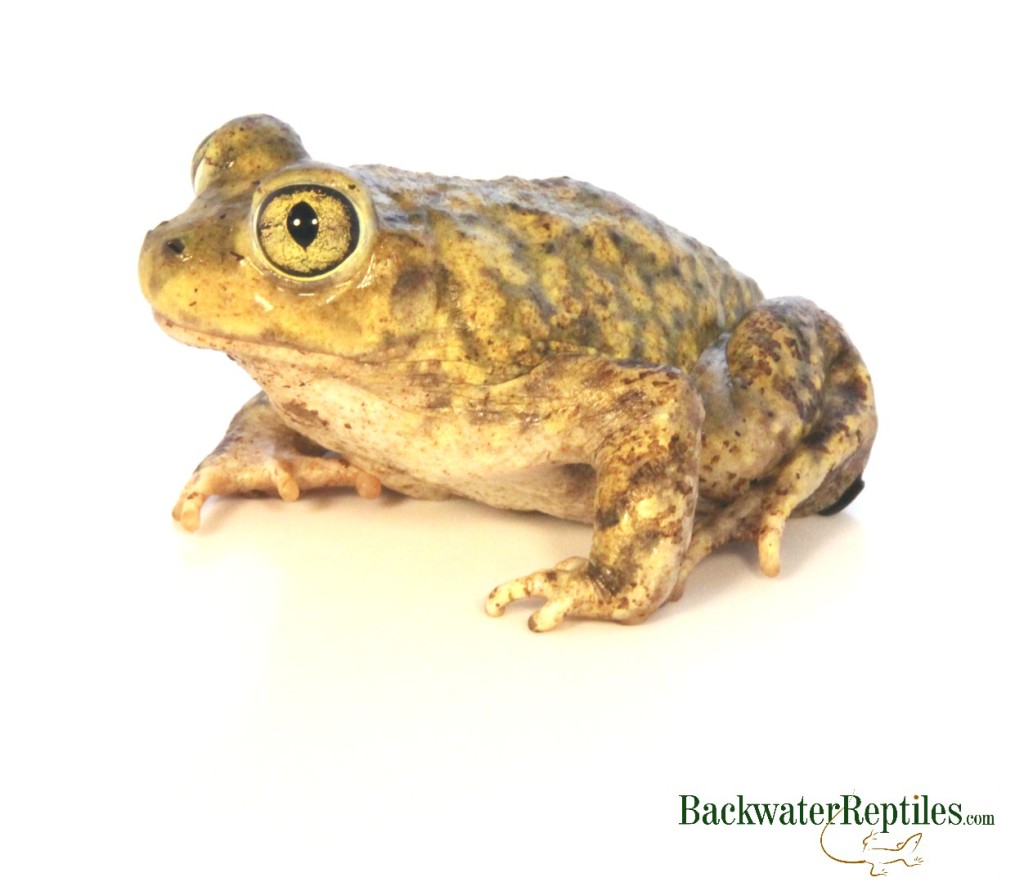At Backwater Reptiles, we think toads are quite underrated as far as exotic pets are concerned. Most have relatively simplistic care requirements, are fun to feed, and don’t need a lot of human interaction or attention to thrive. Not to mention they can be pretty cute too!
One species of toad that doesn’t get a lot of attention is the Couch’s Spadefoot Toad (Scaphiopus couchii). These fun little toads might be shy, but that doesn’t mean they can’t make rewarding pets.
Read on to find out how the Backwater Reptiles team cares for our Couch’s Spadefoot Toads.
Physical Description
Couch’s spadefoot toads will grow to be about three inches long on average when fully mature.
Their skin is actually fairly smooth with relatively few bumps or ridges. They are green, yellow, or olive-colored with dark green, black, or brown blotches or spots on their backs. Their bellies are a creamy color and lack markings.

The common name for this toad comes from the dark spur located on its hind legs. This spur is used much like a spade and helps the toad burrow down into the ground where it spends most of its time.
These toads are also known for their arresting eyes. They have striking vertical pupils and irises flecked with crackles of color. We think their eyes resemble those of a cat.
Enclosure Requirements
In the wild, Couch’s spadefoot toads are found in the southwestern United States (areas of California, Arizona, and Texas). They are also found along the eastern and western coasts of Mexico. This means that they are used to dry, arid habitats with sandy soils and desert vegetation.
In order to replicate this environment in captivity, we recommend a substrate that can retain moisture but doesn’t necessarily stay overly wet. Try organic potting soil with no added chemicals or even shredded paper towels if you want to go really simple. We do recommend the soil if you want to witness your toad perform burrowing behavior though as this medium is more accommodating than paper towels.
If you are keeping a single Couch’s spadefoot, then a ten gallon tank will suffice. If you want a breeding pair, we would recommend a twenty gallon so that they have enough space to comfortably cohabitate.
Your Couch’s spadefoot toad will spend most of its time burrowed underground or hiding during the day, so be sure to provide places for it to take cover. Don’t include any cage accessories that are overly heavy (i.e. large rocks or large ceramics) because the toad could accidentally disturb these items and unintentionally injure itself.

Although they are used to dry, arid, land, we do recommend keeping a relatively moist environment as this will encourage your toad to be more active. Couch’s spadefoot toads are adapted to emerge only when it rains, so keeping the tank humid will help them to stay alert.
We also always keep a shallow water dish in the toad’s enclosure, even if they don’t actually drink the water. It helps maintain humidity and allows the toad to soak if it desires.
Maintain temperatures of mid to high 80s during the day time via lights and don’t let the temperature drop below 70 at night.
Feeding Habits
Couch’s spadefoot toads are carnivores and enjoy eating lots of different types of insects and invertebrates.
The spadefoot toads at Backwater Reptiles are fed a staple diet of gut loaded crickets. We supplement with meal worms, reptiworms, roaches, and night crawlers. Pretty much any invertebrate that is the proper size to fit into the animal’s mouth will do just fine.
Temperament
We haven’t heard of anyone being bitten by a Couch’s spadefoot toad. They are for the most part shy, secretive animals that prefer to hide and run away from you rather than try to bite or behave aggressively.
Couch’s spadefoot toads are also not big on being handled. While you can pick up and hold your toad, we don’t recommend doing it on a regular basis as the toads just don’t really like it.

If you own a Couch’s spadefoot toad, you might actually not even see much of it unless you are a night owl. The toads tend to come out at night and remain burrowed underground in the day.
The bottom line is – Couch’s spadefoot toads keep to themselves and hide a lot. If you want an interactive pet toad, we’d recommend another species.
Conclusion
Although secretive by nature, Couch’s spadefoot toads can make fulfilling pets for people who want a very low-key, low-maintenance animal.
If you wish to obtain a pet Couch’s spadefoot toad of your own, Backwater Reptiles has them for sale.
